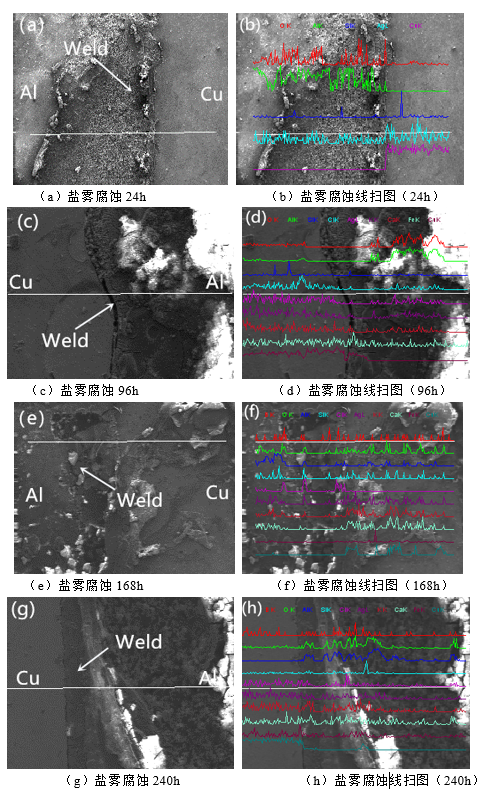Fig. 2.46 shows the EDS line scanning results of samples perpendicular to the weld in each corrosion period. The main elements in the weld and its adjacent surface are O, Al, Si, Ag, Cu, Cl, K and Ca.It can be seen from Fig. 2.46 (b) that the elements on the brazed joint surface of the sample after 24 hours of corrosion are mainly O, Al, Si, Ag and Cu. Fig. 2.46 (d) shows the line scan after 96 hours of corrosion. Compared with Fig. 2.46 (b), additional Cl, Ca, Fe and K elements appear.The reason is that after 96 hours of corrosion, a small amount of Fe contained in 300Al appeared on the surface of the sample and reacted with oxygen to produce oxidation products attached to the sample surface. Cl, Ca and K were elements contained in the industrial NaCl used and appeared on the sample surface after accumulation.After 196 hours of corrosion, it is difficult to find the weld position on the surface of the sample. The surface is covered by a large number of corrosive materials. Through the analysis of the line scan picture, it can be seen that there is a part of Al element and it enters from the aluminum side to the copper side.Figure 2.46 (h) shows the sample surface after 240 hours of corrosion. Try to find a clear weld for line scanning. Corrosion products on the aluminum side of the weld have begun to arrange in a relatively compact way instead of in a random way.






















